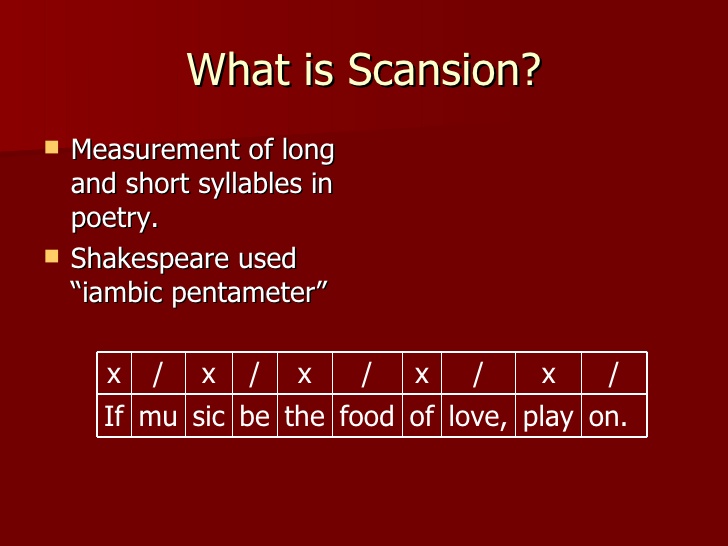

The force of those dire Arms? yet not for those He with his Thunder: and till then who knew Example #7: Paradise Lost (by John Milton)įrom what highth fal’n, so much the stronger provd In the first line, you can notice the use of caesura in the middle it breaks the monotony and creates a dramatic effect. In this example, the first two lines are using trochaic heptameter, while the final line is using dactylic tetrameter. Walcott has used mixed metrical pattern in this poem.

L oosening the grip of their roots, till their hairy clods… Springs, the babble of swol len gul ches un der drenched ferns, Example #6: The Bounty (by Derek Walcott) The rhyme scheme of this poem is irregular and unpredictable, and in this stanza it is AAAB. This stressed syllable appears at the beginning and in the middle of the lines. Dactylic foot uses a stressed syllable followed by two unstressed syllables. This is a good example of dactylic dimeter with two feet in each line. Example #5: The Charge of the Light Brigade (by Alfred Lord Tennyson) The rhyme scheme of this stanza is ABCBB.

The metrical pattern of this stanza is trochaic octameter in which eight stressed syllables are followed by eight unstressed syllables. “ tis some visi ter,” I mu ttered, “ tapping at my chamber door- If we scan (the verb of scansion) the line, we see that: There are three strong beats That means that there are. While I nodded, nea rly napping, suddenl y there came a tapping,Īs of someone gently rapping, rapping at my chamber door. In the scanning of syllabotonic verse, all strong syllables are stressed and all weak syllables are left unstressed for example, Dukh-tritsnia. Over many a quaint and cu rious vo l ume of forgot ten lore, Once up on a mid Night dreary, while I pondered, weak and weary, Example #4: The Raven (by Edgar Allan Poe) You can see the first, second and fourth lines have used iambic tetrameter, while the third line has used tetrameter.
SCANSION EXAMPLE FREE
However, there is no strict meter, as it is a free verse poem. Have at it, Shmoopers.Though first two lines rhyme in this example. Speaking of practice, For Better for Verse is a great website that lets you bone up on scansion on a number of famous poems. The great poets never wrote in perfect meter, so be prepared for more than a few missteps as you start to practice scansion in your reading. 'Trees' is a poem of twelve lines in strict iambic tetrameter.The eleventh, or penultimate, line inverts the first foot, so that it contains the same number of syllables, but the first two are a trochee. Why would they do such a thing? To shake things up, to keep us on our toes, and to play off the meaning of the poems. The syllables in each foot scan as long or short according to the parameters of the meter that the poet employs. Each line of poetry divides into a number of feet (analogous to the measures in music). That happens when poets deviate from the meter they've chosen. Latin Meter and Scansion Latin poetry follows a strict rhythm based on the quantity of the vowel in each syllable. Of course things get really interesting when lines become trickier to scan. This line contains an unstressed syllable (in normal font), followed by a stressed syllable (in bold, italicized font), and that pattern gets repeated five times. So, for example, if we were going to scan the first line of Twelfth Night, it might look a little something like this: For example, in the poem, I used the apostrophe to adjust the syllable count. Here at Shmoop, we scan poems all the time, and we mark our stresses with both bold and italic font. Metre lends a musical element to a poem and by performing scansion we can. When you practice scansion-when you scan-you read a line of poetry, counting its feet, finding the stresses, all in the name of sussing out which meter it follows (if any). This fancy term simply refers to the process of analyzing a poem's meter. Examples of Scansion in Literature Example 1: Hope is the Thing With Feathers (By Emily Dickinson) Example 2: Twelfth Night (by William Shakespeare).


 0 kommentar(er)
0 kommentar(er)
